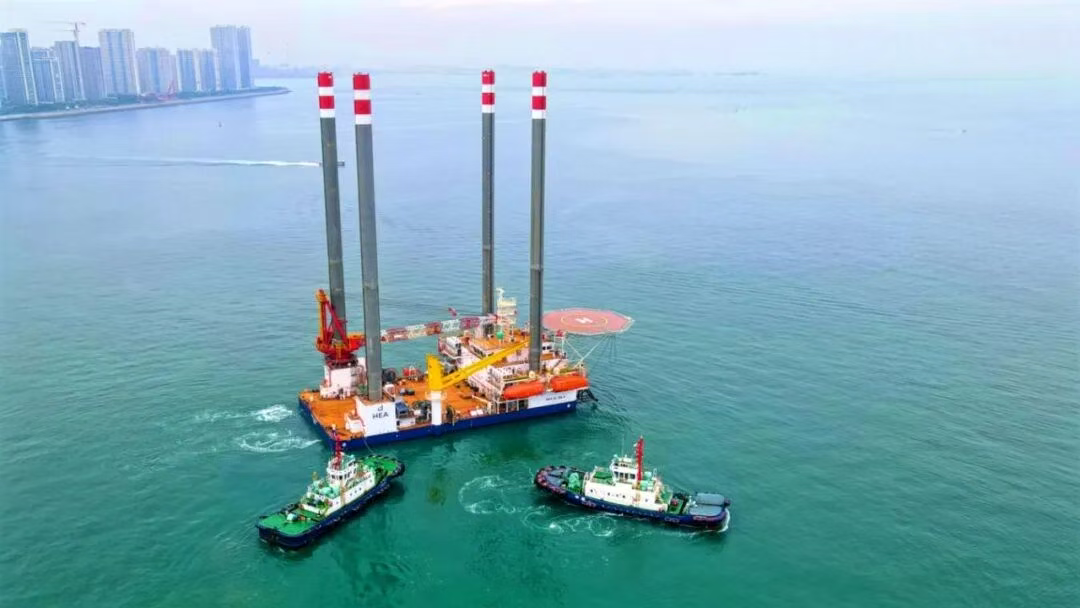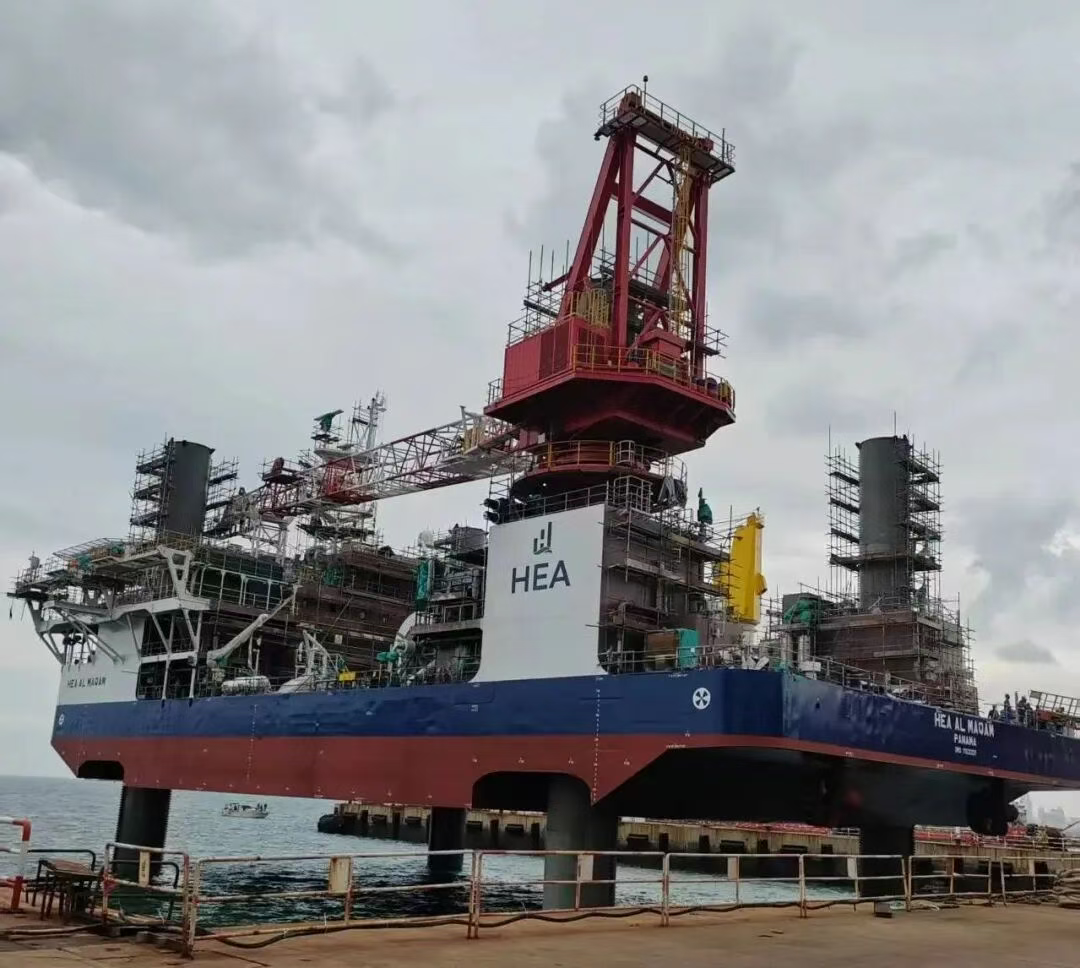Recently, the first TYPE3 PRO jack-up offshore operation support platform, constructed by CSSC Wuhan Marine Machinery Plant (WMMP) as the general contractor, successfully completed its sea trial at its subsidiary Qingdao Haixi Heavy-Duty Machinery Co., Ltd. (HHMC). This milestone marks the platform’s entry into the final countdown phase for project delivery. Concurrently, the second TYPE3 PRO jack-up offshore operation support platform achieved a critical construction milestone with the completion of its launching and staking operations.

On the afternoon of September 26, the first TYPE3 PRO self-elevating offshore operation support platform left the HHMC dock and headed for the designated sea area to begin navigation trials. After arriving at the designated sea area, test personnel conducted pre-sea trials on the platform. The thruster test concluded at 10:00 PM that evening, followed by the main propulsion system test. At 6:30 AM on the 27th, the 100% load function test was completed. The platform then completed related tests, including the anchoring test and the lifeboat release and recovery test. The platform then berthed successfully, concluding the sea trials.
On September 27, following the launch of the second TYPE3 PRO jack-up offshore support platform, the lifting system underwent commissioning. The four legs smoothly drove into the seabed, achieving stable platform positioning. Subsequently, the platform leg extension work commenced.

The TYPE3 PRO series platform is a subsequent jack-up offshore operation support platform of the TYPE3 series platform. It is independently designed by WMMP and has expanded and iterated on the platform functions.
These platforms further optimize deck space, variable load capacity, and accommodation for personnel, featuring platform hoisting, cargo lifting, self-propulsion, and crew living quarters. The core propulsion equipment employs air-cooling technology, eliminating the restrictions imposed by traditional water-cooling systems on operating waters and environmental conditions. This significantly expands the platform’s operational range in shallow waters.


